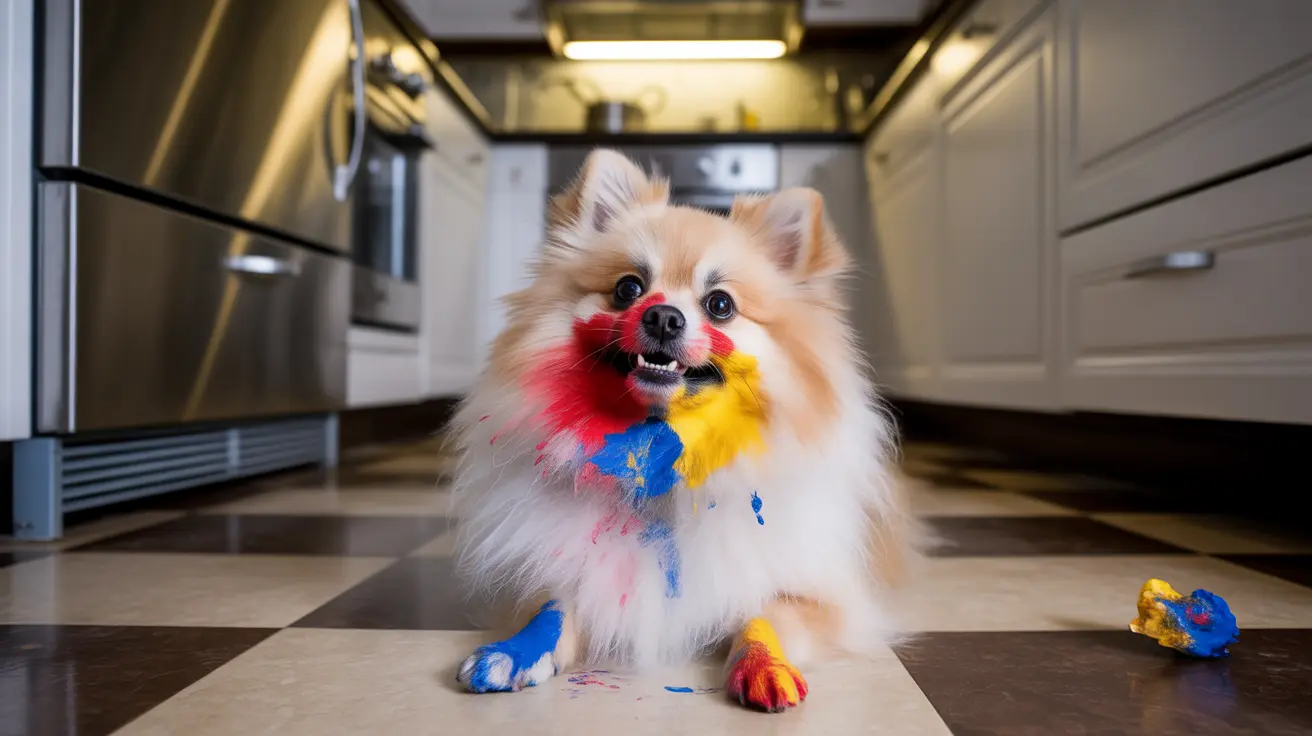Discovering your dog has eaten paint can be a terrifying moment for any pet owner. Whether it's a few licks or substantial ingestion, paint consumption poses serious health risks to dogs and requires immediate attention. This comprehensive guide will walk you through the essential steps to take, potential health risks, and proper treatment options if your dog has ingested paint.
The severity of paint ingestion depends on several factors, including the type of paint consumed, quantity ingested, and your dog's size. Understanding these variables is crucial for proper emergency response and treatment.
Types of Paint and Their Dangers to Dogs
Different types of paint present varying levels of risk to your canine companion:
Water-Based Latex Paint
While generally less toxic, latex paint can still cause significant gastrointestinal upset and discomfort. Large quantities may lead to blockages or severe digestive issues.
Oil-Based Paint
These paints contain harmful solvents and chemicals that can cause serious poisoning. Symptoms may include vomiting, difficulty breathing, and neurological issues.
Lead-Based Paint
Most dangerous of all, lead-based paint (common in older homes) can cause severe poisoning, leading to potentially fatal complications if not treated promptly.
Recognizing Paint Poisoning Symptoms
Watch for these warning signs after paint ingestion:
- Vomiting and diarrhea
- Excessive drooling
- Lethargy or weakness
- Difficulty breathing
- Tremors or seizures
- Paint stains around mouth or on fur
- Changes in behavior or coordination
Immediate Actions to Take
If you discover your dog has consumed paint, follow these critical steps:
- Don't induce vomiting at home
- Collect the paint container for reference
- Contact your veterinarian immediately
- Remove any remaining paint from reach
- Monitor your dog's symptoms
- Follow professional medical advice
Treatment Options and Recovery
Veterinary treatment may include:
- Decontamination procedures
- IV fluid therapy
- Blood tests and monitoring
- Specific treatments for toxicity
- Supportive care measures
Recovery time varies based on the type and amount of paint ingested, but most dogs recover well with prompt treatment.
Prevention Strategies
Protect your dog from future paint exposure by:
- Storing paint securely out of reach
- Using pet-safe products when possible
- Supervising during home improvement projects
- Checking for peeling paint in older homes
- Maintaining a pet-proof workspace
Frequently Asked Questions
What should I do immediately if my dog eats paint?
Contact your veterinarian or emergency animal hospital immediately. Don't induce vomiting at home, as this could cause additional harm. Collect the paint container if possible and monitor your dog's symptoms while seeking professional help.
How can I prevent my dog from accidentally ingesting paint?
Store all paint products in secure, closed cabinets out of your dog's reach. During painting projects, keep dogs in a separate area and clean up spills immediately. Always supervise pets during home improvement activities.
What are the symptoms of paint poisoning in dogs?
Common symptoms include vomiting, diarrhea, excessive drooling, difficulty breathing, lethargy, tremors, and behavioral changes. The severity of symptoms depends on the type and amount of paint ingested.
Is it safe to induce vomiting if my dog has eaten paint?
No, never induce vomiting without veterinary guidance. Some types of paint can cause additional damage if vomited, and the procedure should only be performed under professional supervision.
How can I protect my dog from lead poisoning if I live in an older home with lead-based paint?
Regularly inspect your home for peeling or chipping paint, especially in older buildings. Keep dogs away from areas with deteriorating paint, and consider professional lead paint removal. Consult with your veterinarian about regular lead testing if you have concerns.
Remember, paint ingestion is always an emergency situation requiring immediate veterinary attention. Quick action and proper medical care are essential for the best possible outcome for your furry friend.






